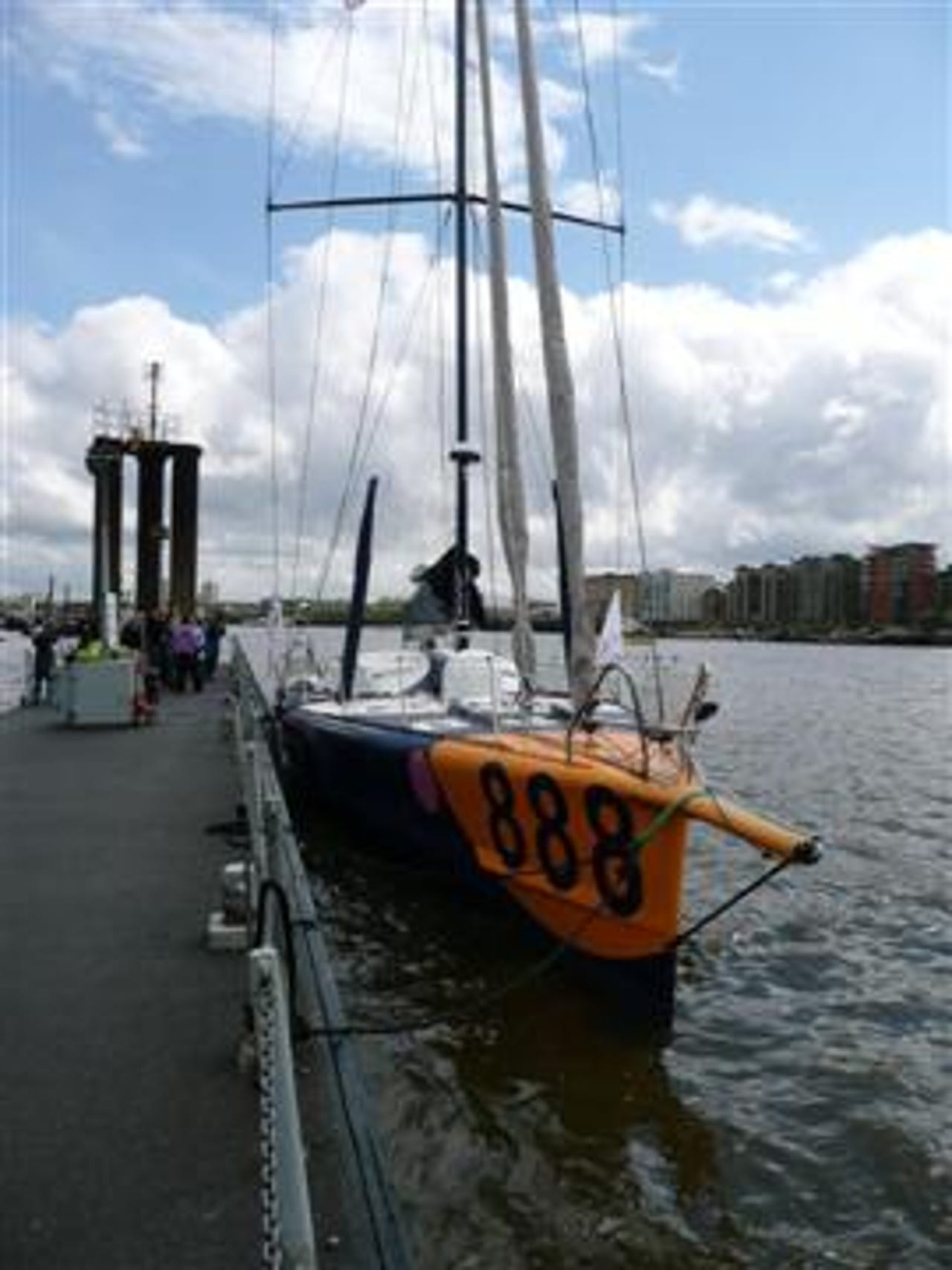Photos: Ellen McArthur's new boat


Setting sail onboard the BT IMOCA 60…
The BT IMOCA 60 is the fruit of a title sponsorship deal between Team Ellen - headed up by iconic British yachtswoman Dame Ellen McArthur - and BT inked in September last year.
She is packed with sophisticated communications that keep the skipper, Seb Josse, in contact with the outside world as he sails through the most remote regions of the globe.
Photo credit: Julian Goldsmith
Seb Josse is the BT IMOCA 60 skipper. He is an acclaimed French racing yachtsman with a previous attempt at the Vendée Globe already under his belt in 2004. He also skippered ABN AMRO 2 in the 2005-6 Volvo Ocean Race and holds the 24-hour monohull record of a 562.96-mile run.
For Josse, the technology at his disposal - through which he receives up-to-the-minute weather and navigation reports from his support team on dry land and sends video reports for the media - is a boon.
He said: "This communication gives us a tremendous advantage. It's the future. It's easy to send pictures to the outside world to explain what it is like to sail single-handed around the world. I can connect to the web to get weather information. I can get a weather prediction for the next five to six days."
Photo credit: Julian Goldsmith
The BT IMOCA 60 interior is sparse to say the least. No unnecessary fittings are permitted, leaving the carbon fibre hull exposed.
The boat weighs 8.4 tonnes, with exactly a third of that weight in the slim bulb keel below, keeping the boat stable in high Antarctic winds. The mast is 28.5m high, carrying a sail area of 590square-metres down-wind.
The space below is surprisingly roomy, considering it will house only one man. However, Josse will doubtless be spending most of his time in the cockpit manning the tiller, looking out for 'growlers' (small icebergs often missed by the boat's radar).
Photo credit: Julian Goldsmith
The control centre below is a concentration of sensory data displays, boat controls and communications equipment. On the right are navigation displays, such as wind-speed and angle, boat speed and Lat/Long position. Further left is a colourful control for the keel, which ensures the optimum profile in the water.
In the centre is a large screen powered by a laptop with plotting information. Charts make up weight. Below this display is a control for the NiCad batteries that power the boat's systems. This battery was chosen for its light weight.
On the left-hand side is the media and communications hub. Above is a small camera for video blogs. Below are the controls that allow Josse to dial-in to the video conference. Furthest right are handsets for satellite phone and RF comms.
Note the low-tech white scribble pad above the ruggedised, water-proofed keyboard.
Photo credit: Julian Goldsmith
Dame Ellen McArthur heads up the team. The yachtswoman held the round-the-world solo sailing speed record, until it was taken by Francis Joyon in February this year.
A committed ecologist, she is a strong voice for BT's campaign on corporate sustainability, drawing on her experience as a single-handed sailor as an illustration of what businesses have to do to make the most of their resources without destroying them.
She said: "In non-stop sailing, we have to make what we carry on board as light as possible. The chances of being first in the race depend very much on limited resources. These sailors are very tired, because they are sailing 24/7 and they can't afford wrong decisions. You live very differently under these conditions."
McArthur's views on the technology that has been developed to keep her in contact with people on dry land are not quite as effusive as Josse's. Like many a busy executive, she finds it is not always convenient to be contactable at any time.
She said: "It makes the day a bit busier. If you can do a video conference, you do it, but it may not always be possible if you are concentrating on sailing."
Photo credit: Julian Goldsmith
Cisco is one of BT's partners in kitting the boat out with technology. Here, the company has provided the team with a mobile wi-fi hotspot, so that they can connect to the web on the boat when it is moored, without having to use the in-board satellite communications. It won't be used when the boat is under sail.
Photo credit: Julian Goldsmith
Josse's bunk is strapped to the side of the boat. There is one on each side of the interior, so that he can sleep on the high side of the boat. This is the more luxurious of his two sleeping arrangements.
The other is cat-napping in a survival suit when he needs to keep a constant look-out for sea hazards.
Photo credit: Julian Goldsmith
Cordon bleu cooking facilities have been forgone for a simple burner. Most of Josse's food will be pre-packaged dry goods. Just add water.
There is no toilet on board. Josse will have to use a bucket instead. A lightweight bucket, of course.
Photo credit: Julian Goldsmith
Francois Barrault, CEO BT Global Services on the left was a primary driver for the sponsorship deal. Like many Frenchmen, he is an avid sailing fan.
McArthur is celebrated across the channel at least as much as she is here. In March, she was awarded the Legion d'Honneur, France's highest decoration by President Nicolas Sarkozy.
The boat was built in Cowes, Isle of Wight, where McArthur is based, but it was fitted out in Lorient, before sailing to London where it was officially launched by Barrault. Here, he struggles to open the bottle of champagne. Eventually the cork broke, not the most auspicious occurrence for the venture…
Photo credit: Julian Goldsmith
… In the end however another bottle of bubbly was fetched to anoint the bow of the boat. With Francois Barrault, CEO BT Global Services was Ellen McArthur and Seb Josse. The sun made a brief appearance for the ceremony too, so perhaps providence was smiling on BT IMOCA 60 after all.
Photo credit: Julian Goldsmith
The BT IMOCA 60 was designed in Annapolis, US. She has a shallow hull and is designed to plane on the water, lessening drag, and surf the 40m-high Antarctic waves, primarily going in the same direction as the prevailing wind. Anecdotally, she will exceed 20 knots (nautical miles per hour) with ease, but her top speed is more in the low to mid 30s.
The boat will compete in the Artemis Transat in May, sailing from Plymouth to Boston in the US and then the Vendée Globe non-stop single-handed round the world race starting in November. It is regarded to be the toughest sailing challenge in the racing calendar.
Photo credit: Julian Goldsmith